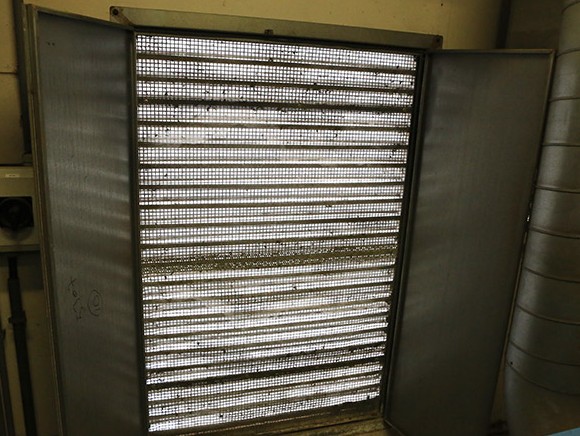
Wouter Burggraaf is the owner of the hygienic consulting agency Burggraaf & Partners, a member of the EHEDG Netherlands board, a member of the Safe Food Factory community and chair of the ad-hoc work group Hygiënische Perslucht (Hygienic Pressurised Air).
Food risks often stem from outside the food itself. One potential risk source is pressurised air. The use of pressurised air is quite technical and as such, is often performed by technical services. It does not have a daily impact on quality services. Therefore, a business typically does not know when contaminated pressurised air comes into contact with food products and where the risks lie.
How can pressurised air become a risk? What requirements must we set for pressurised air and its various applications?
Pressurised air is primarily used for operating clamps and cylinders. However, it can also directly and indirectly come into contact with foods, sometimes even as an ingredient, such as with ice cream or whipped cream. In other cases, it is a tool: for example, the 40 bars of pressure used to shape plastic bottles (blow moulding), for blowing away “incorrect” chips, picking and placing products, pneumatic transport, cooling a product after baking or frying, and for drying or cleaning candies and vegetable peels.
Under the chairmanship of Safe Food Factory, several renowned suppliers of pressurised air equipment in the Netherlands have been collaborating for three years on a practical guideline for pressurised air, which will be presented during a seminar at the ROVC in Ede on 31 May. Safe Food Factory had already created a comparable practical guideline, in which the problem regarding hygienic cabling was addressed throughout the industry. The solutions from this integral approach are currently being implemented at Danone (the new powdered baby formula manufacturer in Cuijk), FrieslandCampina, Aviko (potato products), Vion (meats) and Aviateur (bakery).
The Hygienic Pressurised Air work group has 15 members: from compressor and filter specialists to installation companies and cleaning and hygiene specialists. In total, there was more than 350 years of experience with pressurised air seated at the table, which resulted in interesting discussions and facts. It was discussed the extent to which it would be logical, no matter how irrational it sounded, to empty a lorry with its own compressor, which may have absorbed exhaust gases and would mix them with the product.
For the pressurised air requirements regarding food safety, references were made to the BCAS Best Practice Guideline 102 Food and Beverage Grade Compressed Air, created by the British association of pressurised air equipment suppliers. One of the members of the work group mentioned that when creating it, the interests of the suppliers sometimes strongly came into play. This is a reason to do this work and, using an extensive risk analysis, to create an objective assessment of the Dos & Don’ts of pressurised air, where food safety would come first and foremost.
The practical guideline begins with an overview of the applicable and relevant legal texts, official standards and other practical standards, such as BRC, IFS and ISO/TS22000. Furthermore, the complete pressurised air system is detailed: compressors, blowers, oil and water separators, air dryers and distribution and filtration systems. The topics are addressed all the way from the air absorbed to the point of use, risks are mentioned and control measures and design criteria are presented. The list of potential contaminants is long and depends on the chosen equipment and filtration materials.
Here are some examples: microbial infection in the water separator; biofilm formation in pipes; soiled and infected inlet filters. Filter operation is expected to be perfect, but carbon filters do not remove all odours, have a limited product lifetime and must be replaced promptly. One benefit is that certain synthetic lubricants in a lubricated compressor can sometimes bind aerial components in pressurised air. In contrast, American legislation states that food-grade lubricants for resources of mineral origin allow for a PCB value that is too high. For pressurised air, this can lead to unacceptably high concentrations. Running air compressors at length unnecessarily leads to high temperatures and the potential for grease from the bearings to seep into the air. Surprisingly enough, this can occur with “oil-free” compressors as well. Dust and fine debris pose an underestimated problem: but not for food safety, only for the employee. At the local level, dust and fine debris standards can be exceeded.
In total, 7 sources with potential hazards were identified:
Air absorbed from the surroundings
Suction/air intake filter
Air compressor (or blower), whether oil-free, oil lubricated or water lubricated
Wet air buffer (water separator)
Dryer
Filter
Storage and distribution
The identified hazards include
Micro-organisms
Vermin
Steam and condensation
Gaseous and liquid oil
Hydrocarbons (incl. PAKs and PCBs)
Unpleasant odours and tastes
Chemicals
Local impurities
Dust (from filtration material)
Fine debris
Nutrients
Cooling water (leakage)
Synthetic parts (and other worn areas)
During installation/expansion and maintenance, physical impurities can arise as well as unexpected chemical and other types of impurities. In the practical guideline, risk analyses are made for these potential sources and courses of action to resolve these risks are provided. Where possible and required, the work group conducted practical measurements at food businesses. In conclusion, the practical guideline has been presented to ten food businesses for assessment in order to generate support as broadly as possible and to yield a document that can help the user make an informed choice regarding the safety of food and employees.

During the seminar on Thursday 31 May at the ROVC in Ede, the specialists in the work group will each explain their specific part in the guideline. For more information: www.safefoodfactory.com
The intake location of “clean” air. How much makes its way through? When should that filter be cleaned or replaced?
Source: Beeld Risk: ©OLIVIER LE MOAL/SHUTTERSTOCK.COM